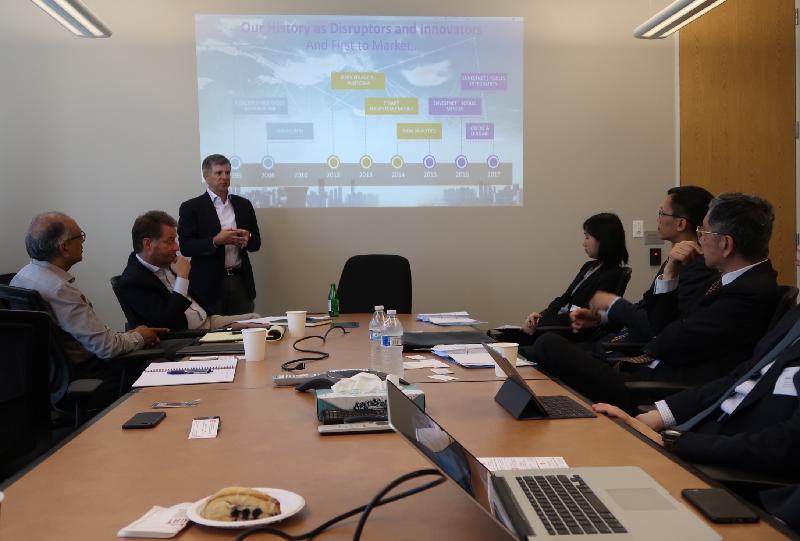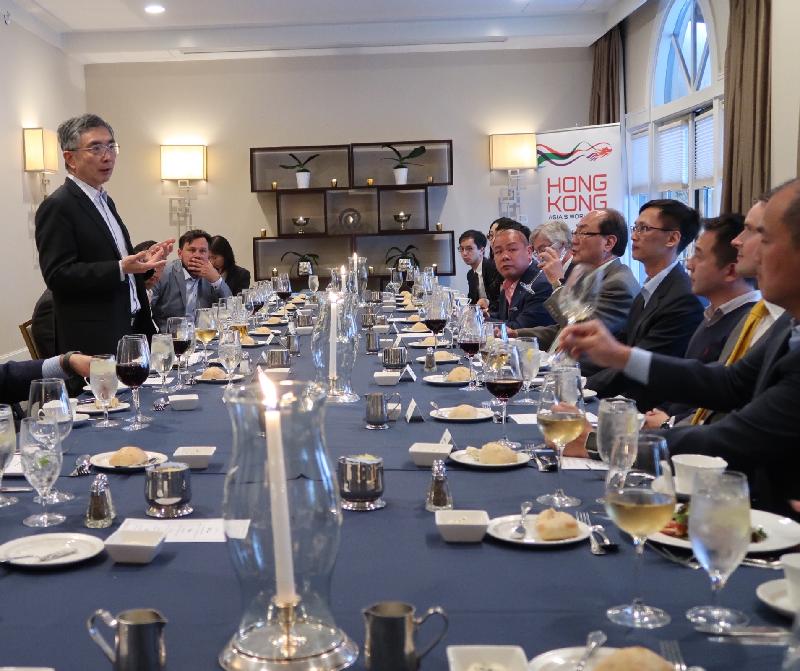LCQ21: Safety of lifts in old buildings
Following is a question by the Hon Paul Tse and a written reply by the Secretary for Development, Mr Michael Wong, in the Legislative Council today (May 30):
Question:
A number of accidents resulting in casualties caused by failures of lifts in old buildings have occurred one after another in recent years. Widely known cases include: in February this year, a lift mechanic was crushed to death by a lift at On Yam Estate, Kwai Chung; on the 8th of last month, a lift in Waterside Plaza, Tsuen Wan, ascended at a high speed and then smashed the top of the lift shaft, causing injury to a couple; and on the 11th of this month, a woman died after getting her leg trapped by the closing doors of a lift and then falling to the bottom of the shaft in Sheungshui Town Centre, Sheung Shui. Quite a number of members of the public are extremely concerned about the proper repair and maintenance of the lifts in their residences. In this connection, will the Government inform this Council:
(1) whether it has compiled statistics on the total number of lifts in buildings which are more than 30 years old; among them, of the number of lifts situated in Kwun Tong and Wong Tai Sin Districts;
(2) of the policies in place to monitor the repair and maintenance of lifts in old buildings; whether it has stepped up monitoring efforts in response to the frequent occurrence of lift accidents in old buildings in recent years;
(3) of the respective brands and models of lifts, as far as the authorities know, among the many lifts in old buildings, (i) the supply of parts for which from the original manufacturers is no longer available and (ii) the manufacturers of which no longer provide the relevant lift repair and maintenance services in Hong Kong;
(4) of the current manpower in the Electrical and Mechanical Services Department (EMSD) responsible for the work of monitoring lift safety; among which, the manpower responsible for Kwun Tong and Wong Tai Sin Districts;
(5) whether it will consider implementing the proposal from a member of the Kwun Tong District Council (To Tai constituency) that a fund be set up by the Government to subsidise owners of buildings which are more than 30 years old for carrying out inspection, repair and replacement of old-model lifts therein, so as to safeguard public safety; if so, of the details; if not, the reasons for that;
(6) whether it will establish a contingency mechanism for lifts which are more than 30 years old so that when an emergency lift incident or accident has occurred, or when members of the public have noticed any anomalies or signs of danger on lifts, the contingency mechanism may be activated immediately to cope with the situation;
(7) as it has been reported that the Registered Lift Contractors’ Performance Rating Scheme established by EMSD is virtually non-existent as quite a number of contractors with no safety star or quality star may still undertake works, whether the authorities have reviewed the loopholes in the existing mechanism; if so, of the details; if not, whether a review will be conducted immediately; and
(8) of the respective numbers of registered lift contractors (i) whose performance was rated as substandard, (ii) who were issued warning letters, and (iii) who were fined or had their registration revoked due to contravention of regulation, in the past three years?
Reply:
President,
The operation of lifts in Hong Kong is regulated by the Lifts and Escalators Ordinance (Cap. 618) (the Ordinance), which was put into operation on December 17, 2012, to replace the repealed Lifts and Escalators (Safety) Ordinance (Cap. 327). The Ordinance introduces a series of new and enhanced regulatory measures including stipulating clearly the responsibilities of the Responsible Person (i.e. owner of the lift/escalator and any person who has the management or control of the lift/escalator), the Registered Contractor, the Registered Engineer and the Registered Worker. Since the Ordinance has come into operation, the average annual number of incidents (Note) involving failure of lift and escalator equipment has been remarkably reduced as compared with that before the Ordinance was put in effect, with a reduction of 72 per cent from an average of 28 cases per year in 2010 to 2012 to an average of 7.8 cases per year in 2013 to 2017. The Electrical and Mechanical Services Department (EMSD) will continue to strictly enforce the Ordinance and is committed to introducing various measures to enhance the safety of aged lifts, so as to ensure that the public can enjoy safe lift services.
Our reply to the question raised by the Hon Paul Tse is as follows:
(1) As of the end of 2017, there were about 66 200 lifts in Hong Kong, of which about 20 430 were more than 30 years old. There were about 1 570 and 450 of lifts of more than 30 years old in Kwun Tong and Wong Tai Sin Districts respectively;
(2 and 5) The Ordinance stipulates the Responsible Person for a lift must ensure that the lift and all its associated equipment or machinery are kept in a proper state of repair and in safe working order. The Responsible Person shall engage a Registered Contractor to undertake the maintenance works of the lift and ensure that periodic maintenance is carried out in respect of the lift at intervals not exceeding one month. The Responsible Person shall also ensure the lift to be thoroughly examined by a Registered Engineer at intervals not exceeding 12 months. The EMSD adopts a risk-based approach and strengthens surveillance checks of those lifts with higher risk factors, such as with longer in-service years and frequent complaints or failures, so as to monitor the maintenance works and check for contraventions of the Ordinance.
In general, lifts are safe to use with proper periodic examination and maintenance. Owing to rapid technological advancement in recent years, modern lifts are equipped with more comprehensive safety devices than the aged ones. Therefore, aged lifts have room for improvement and enhancement. In view of this, the EMSD promulgated in 2011 “the Guidelines for Modernising Existing Lifts”, which aims at recommending the Responsible Persons install safety devices (including the unintended car movement protection device) for their aged lifts to make the lifts safer, more reliable and comfortable.
As of the end of 2017, there were about 66 200 lifts in Hong Kong, of which about 80 per cent were not equipped with safety devices of the latest standard. Owing to the fact that the lift modernisation is carried out on a voluntary basis, modernisation works of different level have been carried out to about 5 200 lifts since 2011. The progress is not remarkable.
In view of the above, the Development Bureau and the EMSD are actively formulating new measures in short term, medium term and medium-to-long term to enhance the safety of aged lifts, thereby further protecting public safety.
(3) In general, lift manufacturers will design and manufacture their products in accordance with relevant international guidelines or standards. Many parts can be compatible with those produced by other manufacturers. Some manufacturers may even adopt parts produced by other manufacturers in manufacturing their products. Therefore, discontinuation of production of certain manufacturers or of certain models does not imply that the relevant parts and components cannot be purchased from the market.
However, with time we believe it will become more and more difficult to acquire compatible parts after cessation of production. As a result, it is probable that the time required for maintenance and repair will be affected and the usage rate of lifts reduced. Eventually, it may be impossible to purchase compatible parts in the market.
Therefore, the Responsible Person for a lift should find out from his Registered Contractor the actual situation and decide whether his lift should be replaced or modernised. The EMSD does not have the information regarding the brands and models of lifts of which the genuine parts are no longer supplied by the respective manufacturers or the respective manufacturers no longer provide maintenance services in Hong Kong.
(4) At present, there is a dedicated team comprising 43 staff members in the EMSD responsible for carrying out various regulating work on lift and escalator safety in Hong Kong. The department will deploy its manpower flexibly to carry out the regulatory work according to actual needs, and hence no dedicated manpower is assigned to be responsible for individual districts.
(6) Lifts in Hong Kong are equipped with different safety components and devices to ensure passenger safety. With proper periodic maintenance and examination, normal operation of lifts can be safeguarded. Notwithstanding this, if passengers notice any abnormalities of the lift, such as movement of the lift car before complete closure of the lift door, they should immediately notify the lift’s Responsible Person (including the building management office, the owners’ corporation and the owners’ committee) to follow up. The Responsible Person should suspend the operation of the lift before ascertaining its safety, and should also contact the Registered Contractor for inspection and follow up as soon as possible. The Registered Contractor has the responsibility to follow up the fault call received in a serious manner to ensure safe operation of the lift.
Upon receiving a notification of the occurrence of a lift incident, the EMSD will arrange duty officers to arrive at the scene as soon as possible for an investigation. If the incident is found involving contravention of the Ordinance, the EMSD will strictly enforce the law.
(7 and 8) During the daily surveillance checks and incident investigations, if the EMSD discovers that a contractor has performed unsatisfactorily or even contravened the Ordinance, the EMSD will take appropriate action according to the seriousness of the case. For serious cases, prosecution will be taken in accordance with the Ordinance and/or the cases will be submitted to the Disciplinary Board Panel for hearing. The contractor may be subject to cancellation or suspension of registration eventually. As the relevant procedures will take time, the EMSD has introduced the “Registered Lift and Escalator Contractors’ Performance Rating System”, as an administrative measure other than enforcement under the Ordinance. This will enable the EMSD to deduct the score of a contractor immediately according to the seriousness of the incident. The scores will be uploaded to the EMSD’s website so that the public can know the performance of each contractor in a timely manner, thus enabling them to choose a suitable contractor to provide maintenance services for their lifts. The EMSD will also make remarks in the said website promptly when a contractor is involved in a serious incident under investigation, so that the public can make a holistic assessment when choosing their lift contractors.
The “Registered Lift and Escalator Contractors’ Performance Rating System” uses a “Star Rating” system to present the safety and services quality performance of contractors in carrying out lift/escalator works. There is no “pass” or “fail” under the system. If a contractor does not have the “Safety Star”, it means that in the preceding 12 months’ inspections by the EMSD, the contractor has had its score on safety items deducted, received warning letters from the EMSD and was under the department’s further investigation. As mentioned above, the EMSD will examine the safety issues in each case in accordance with the established criteria and procedures to decide on appropriate enforcement actions, including the need for cancellation or suspension of registration. Unless the registration of the contractor has been cancelled or suspended, they can still provide lift maintenance services, including those under the ongoing services contracts.
From 2015 to 2017, a total of 17 Registered Contractors were issued with warning letters. In addition, since 2015, there have been four Registered Contractors convicted and fined by the court for contravention of the Ordinance, while there has been one Registered Contractor each ruled and fined by the Disciplinary Board Panel as a result of having committed a disciplinary offence under the “Lifts and Escalators (General) Regulation” and the “Code of Practice for Lift Works and Escalator Works” respectively. In the past three years, no Registered Contractor had been cancelled of registration.
The EMSD will continue to listen to the views of various stakeholders on the “Registered Lift and Escalator Contractors’ Performance Rating System” and will timely review and improve the system.
Note: In accordance with the Ordinance, the Responsible Person for a lift must notify the Director of Electrical and Mechanical Services of the following lift incident:
(i) A person dies or is injured and the death or injury involves a lift or any associated equipment or machinery of a lift;
(ii) A failure of the main drive system of a lift;
(iii) A breakage of any suspension rope of a lift;
(iv) A failure of any brake, overload device, safety component or safety equipment of a lift; or
(v) A failure of any interlocking device for any door of the lift-way of a lift. read more






